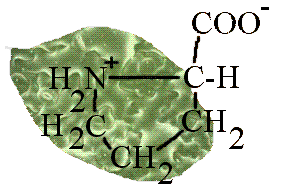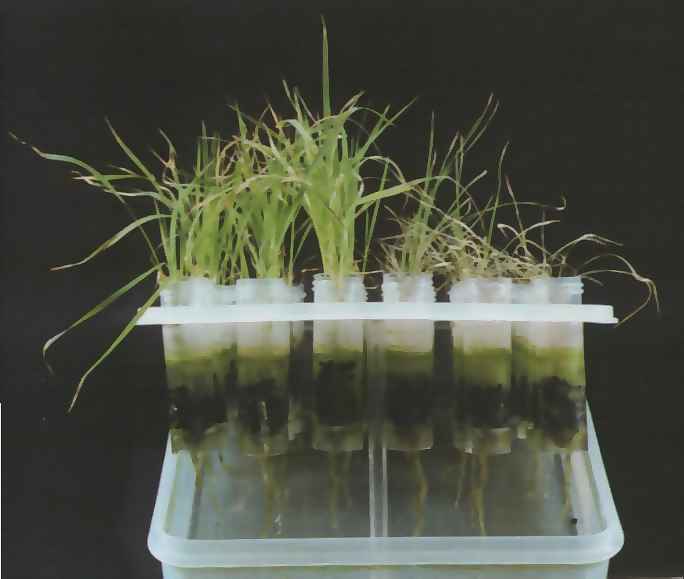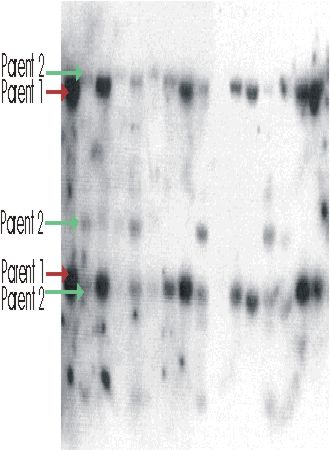 |
EFFECTS OF ABIOTIC STRESS
ON PLANTS
Cold Stress |
|
| Introduction Heavy metal stress Cold stress
|
 Seedlings of two varieties of rice after exposure to -2 degrees Celsius for 6h. The seedlings have had 1 week in a growth room to recover from the cold stress (LHS: three cold tolerant varieties; RHS: three cold sensitive varieties. Plants living in temperate climates require tolerance to the seasonal advent of cold. However, tropical or sub-tropical species may also experience sudden cold spells, in unseasonal weather or at higher altitudes. Rice is a tropical crop where growth is checked by chilling. A recent project at Liverpool developed a method to subject rice seedlings to cold under controlled conditions. The objective was to develop methods to screen rice varieties for cold tolerance. It was important to know that brief exposure to cold in the laboratory was a true guide to the plant's potential to recover from a real frosty night. Analyses of biochemical changes in the seedlings revealed characteristics typical of plants exposed to cold weather. This suggested that the laboratory method was measuring a real parameter of cold tolerance.
In parallel, a series of inbred rice lines were screened for restriction fragment length polymorphisms (RFLPs). This method is used in breeding programmes to allow detection of desirable traits within individual plants. It relies on knowledge that a particular RFLP, or other genetic marker, is linked to a particular trait. This in turn requires appropriate methods and plants to test for the trait as well as application of molecular biology. Even for a plant like rice with a small genome, it can take considerable time to build up this information. In this study, one RFLP was identified that appeared in more cold tolerant than cold sensitive lines. By building up a series of these correlations, the position of the gene contributing to this trait could be identified. |
